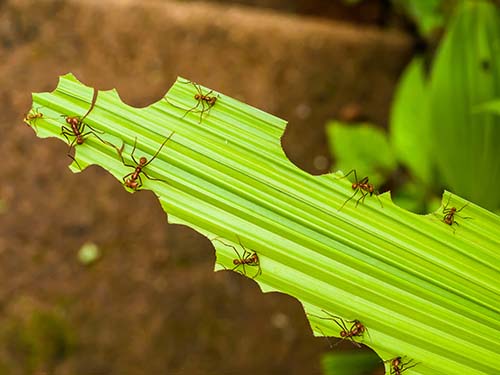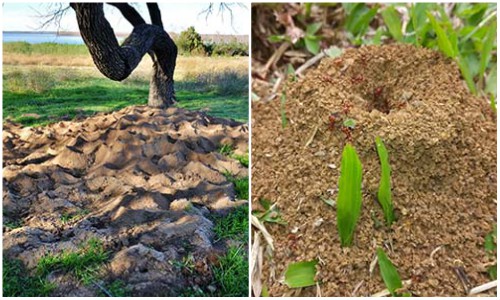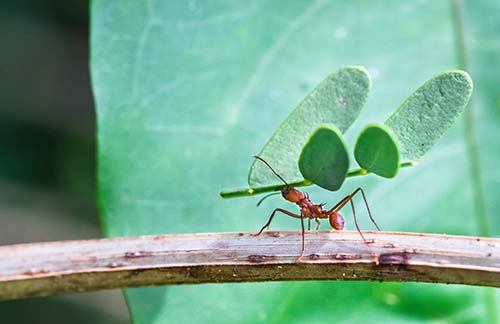
Leafcutter ants are small ants that can cause large amounts of damage to crops, trees, and plants. As leaf cutter ants tend to keep to rural areas, people often see the damage created by these ants before seeing the ants themselves. Keep reading to learn the signs of leaf cutter ants (also known as parasol ants).
Leaf Damage

The most prevalent sign of leaf cutter ants are leaves that have holes and missing parts. The ants will start from the outside of the leaf and work their way in, leading to scalloping along the side of the leaves. The ants will often leave the stems of the plants.
Leafcutter ants will cut the leaves of trees, including fruit trees, plants, shrubs, weeds, flowers, and garden crops. Crops and plants can be destroyed within hours in the most severe infestations.
Mounds

Leaf cutter ants create large mounds, sometimes up to 2-3 feet tall. The mounds provide entrances to underground nests that can reach almost 10 feet deep and 100 feet across. One nest can hold up to 8 million ants.
Mounds are typically found in well-drained, sandy soil, but they also prefer areas of high moisture like riverbeds and drainage ditches. Many mounds may be found close together.
Trees

Contrary to popular belief, adult leaf cutter ants do not actually eat leaves, but instead feed on the sap of trees. These ants can be found along tree trunks and branches and will also stop to feed on sap on their way to and from collecting leaves.
If you suspect you have leaf cutter ants on your property and are trying to contain an infestation, click the right arrow below to read more on how to get rid of leaf cutter ants.
Not sure if the ants you are seeing are leaf cutters? Click the left arrow for our leaf cutter ant identification guide.


